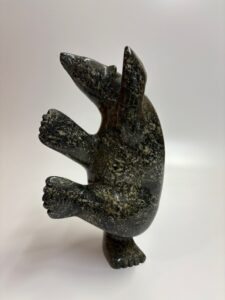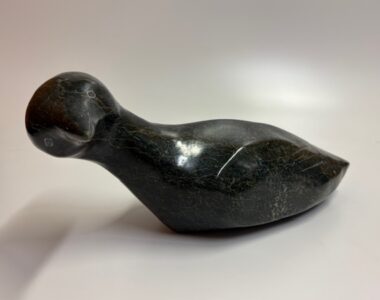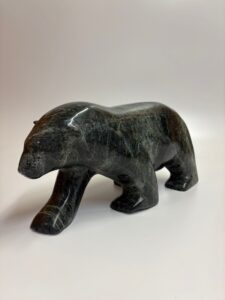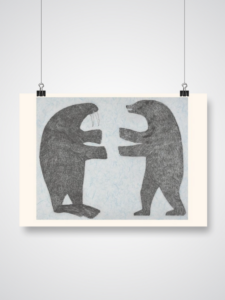NUNA PARR
Cultural Group:
Birth Date:
Birthplace: Kinngait, Nunavut
Nuna Parr’s bears are one of the most sought-after art commodities from Cape Dorset. Perhaps it is their size, sense of movement and vigour, and sculptural forms that make them so desirable. Nuna is renowned nationally and internationally for his dancing and walking bears.
A self-taught carver, Nuna first started carving in 1957, when he was eight years old during recess while at school. His first carving was a seal. He says he started in order to make money. When asked why he specializes in bears, he candidly says that they are easier to carve than walruses, which are more complicated because of their tusks. He also prefers to carve large pieces. Parr’s work depicts animals in fanciful and human-like poses, graceful in their movement, in juxtaposition to the solid pieces of local stone that he uses. Parr is a skilled hunter on the land, and his careful observation of arctic wildlife serves him well in his art practice with his realistic rendering of animals.
Known for his bear sculptures Parr says that he always keeps his audience in mind and would choose rough stone that is best suited for a particular carving. He used to quarry stone from Markham Bay, but now he gets stone from the Kangirsukutaa (Korak Inlet) quarry.
He says, however, that he is not good at sanding. Usually he gets his wife, Atituq Parr, to do it for him. He prefers using power tools because the chopping motion of the axe hurts his arm. He admired Oshuitok Ippellie because he carved in great detail but has not emulated him. Nuna’s daughter Mary also carves.
His advice to young artists who say that they cannot carve is, “You have to keep trying, and you will learn.”
When asked if he would still carve if he were starting over again, he said that he would, but that if he could not carve, he would become a prospector.





